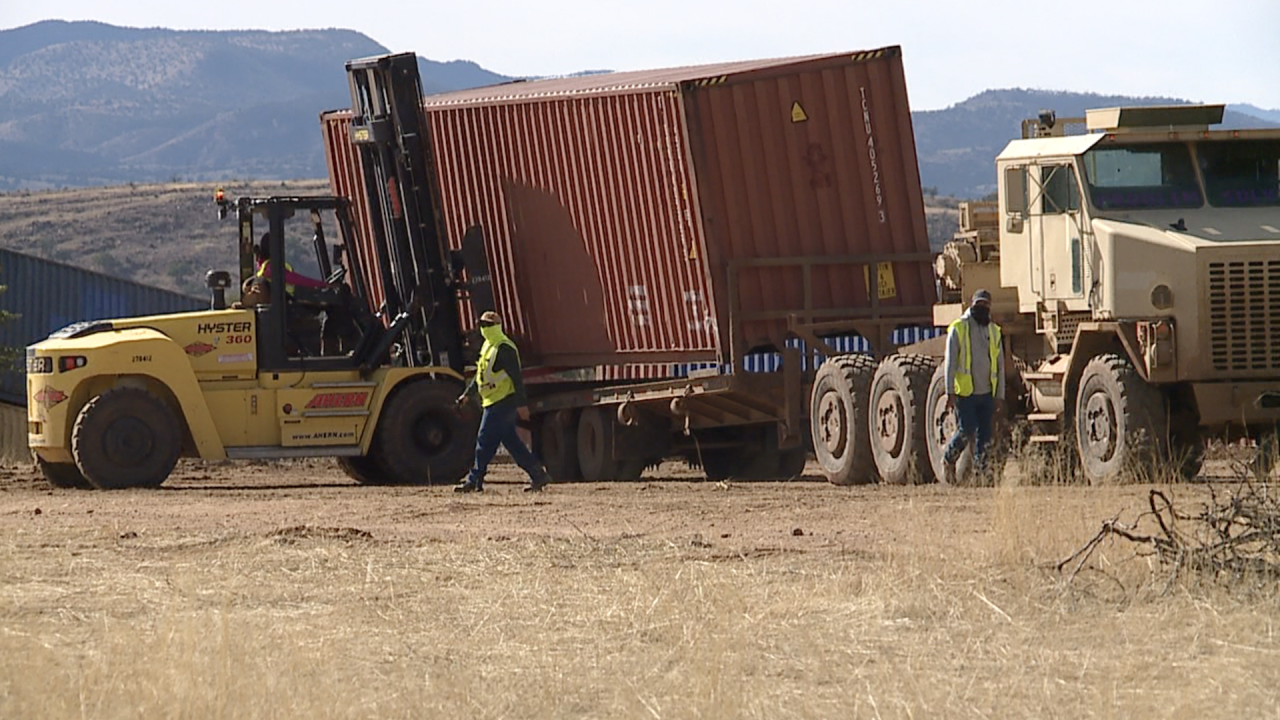TUCSON, Ariz. (KGUN) — The U.S. border along Mexico has evolved through the years from a pile of rocks, to 30-foot steel posts in some areas.
KGUN 9 takes a look at the border wall that has stirred quite a bit of controversy and how we got to the border wall we have today.
The U.S.-Mexico border is nearly 2,000 miles long, with much of the land having an existing border wallor having a contract in place to build one.
The first reported barrier was built in the early 1900s in between Nogales, Arizona and Nogales, Sonora. The six-foot-tall wire fence was built by the U.S. to deter cattle from crossing the border.

"There was a 5-straw barbwire fence like a cattle fence all the way...to Cochise," Former Nogales Mayor Arturo Garino said. "We used to go across that fence and we used to pick acorns, when we were little and then we would go back across the fence. And sometimes you wouldn't even recognize if it was a cattle fence for a ranch or if it was for the border...We did that as kids all the time, everybody did that."
Fast forward to today, for several long stretches of land you'll see steel fencing, 30 feet tall, installed during the Trump administration.

So how did we get from blocking cattle to blocking out people?
Border barriers became more common in border towns throughout the century. During the George H.W. Bush administration several miles of fencing were installed in the early 1990s along the San Diego-Tijuana border. While republicans have historically encouraged a border wall, democratic leaders have also helped build the wall.
President Bill Clinton even used a Vietnam-era landing mat in the 90's to help helicopters land.
Of course the border wall would only expand, with President Donald Trump securing $1.6 billion from Congress in 2018 for his plans to build and replace around 100 miles of border wall.
Over the next few years the initiative to "build a wall," would become a legal battle, and became highly politicized—ultimately leaving crews who were working along the border to halt work as millions of dollars of equipment sat unused over stretches in southern Arizona.
That wouldn't stop local leaders from stepping in. Then-Arizona Governor Doug Ducey got creative in 2022, using shipping containers to fill the gaps left at the border. Those were torn back down in early 2023, after months of back-and-forth ultimately ending in a trespassing lawsuit when the containers went up on National Forest land. The federal government says it has plans to complete he existing fencing along the border.

"I think what we're going to see is more and more technology associated with the wall," Yuma Mayor Douglas Nicholls said. "So when we say the wall, I think of it more as a system. I think of the system as a physical barrier, a camera system, a sensor system and then a response system and I think those last three items are really where the focus is going to be because the physical barrier is there."
For now the state's taxpayers will spend about $76 million to remove the containers.
Watch KGUN 9's hour-long special presentation, Cruzando la Linea: Crossing the Line 2023 only on our website and all our digital platforms. Our news team takes a deeper look at the issues impacting Arizona's southern border.
——-
Denelle Veselik is an anchor and investigative reporter for KGUN 9. It's been her dream to tell your stories for the past decade. She is extremely curious and wants to continue to use her storytelling for the greater good. Share your story ideas and important issues with Denelle by emailing denelle.veselik@kgun9.com or by connecting on Facebook, Instagram and X/Twitter.



